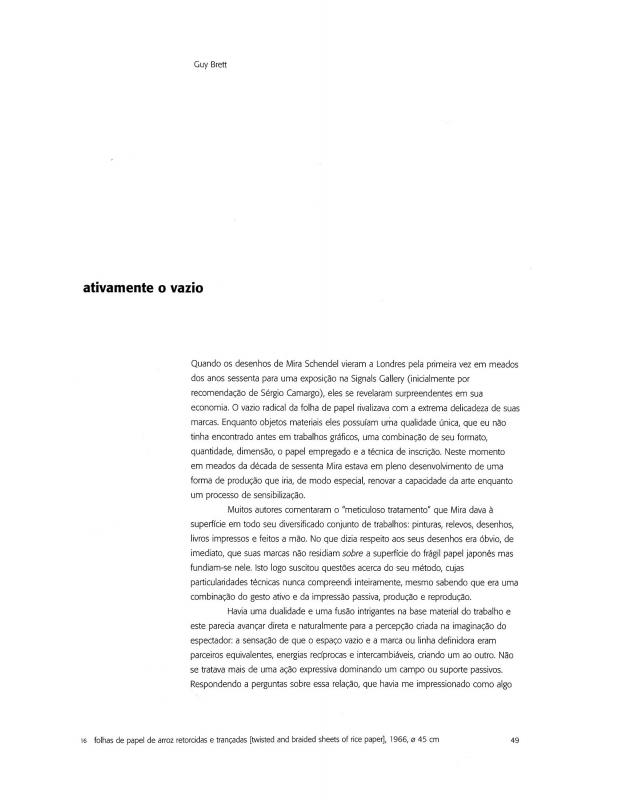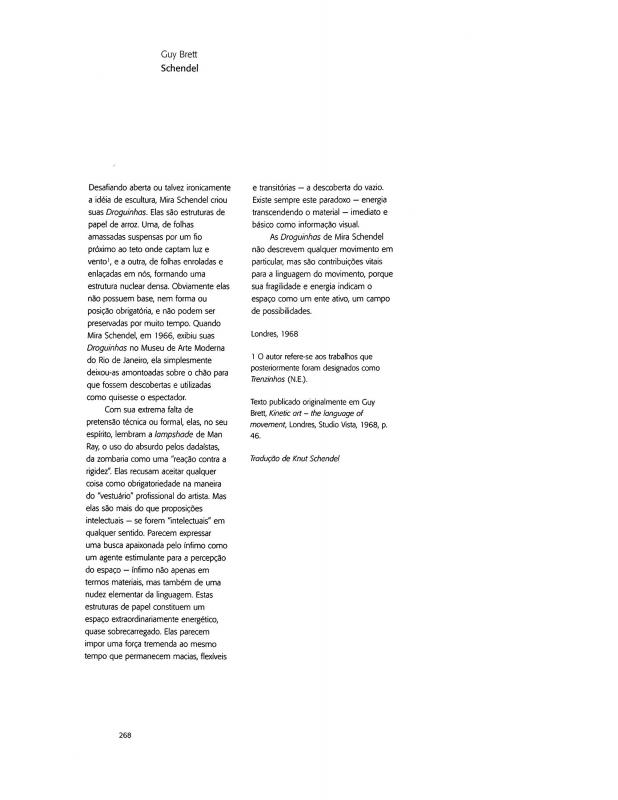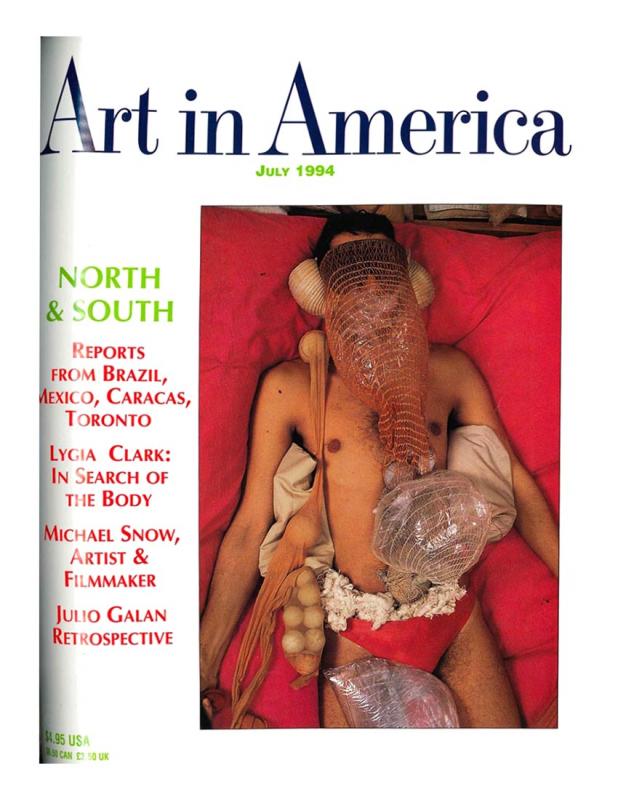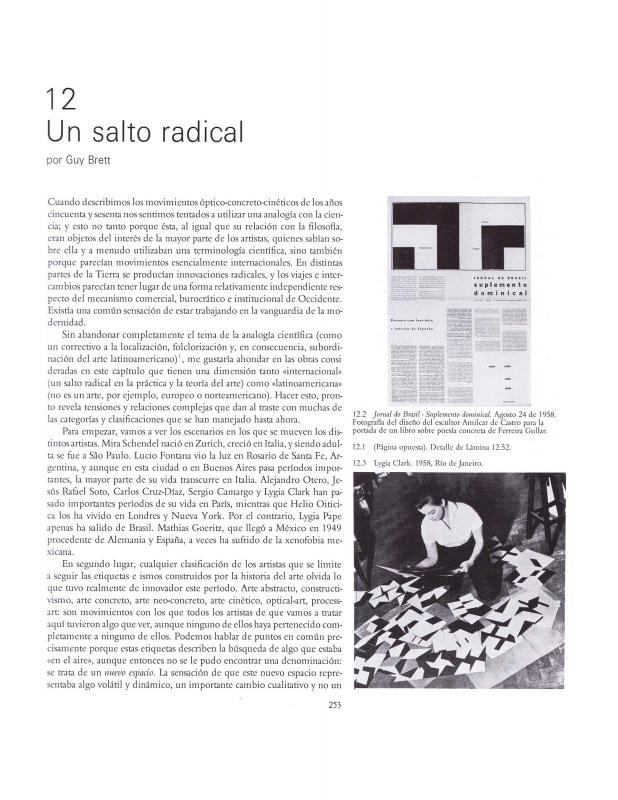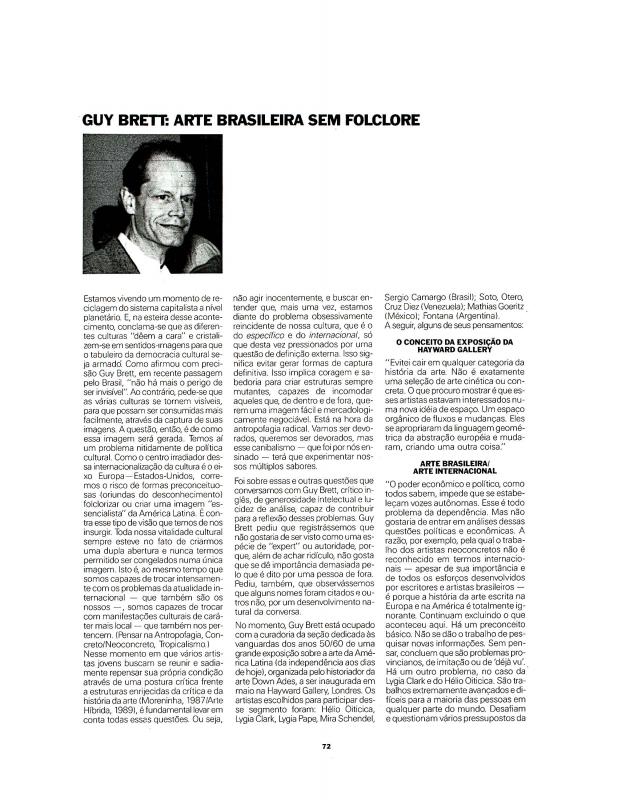This assessment by the English critic allows for an in depth understanding of his key role in the dissemination of Brazilian art abroad. Through his personal ties to Brazilian artists, in his critical texts, and by curating several exhibitions of these artists, Brett came to have his own perspective on the art produced in contemporary Brazil. The critic aimed to write from the point of bifurcation in the art world, where the international art scene headed down one path, and twentieth-century art history took the other. Although this article makes no attempt to provide a precise chronology, in addition to being a meditation on art, it provides a broad panorama of the international reach of these artists. As well as informing about these most important artists in contemporary Brazil, the critic obliquely references the acceptance abroad of their radical approaches.
Working as a critic based in London, Guy Brett (b. 1942) has served as a curator as well as a lecturer around the world. He was the cofounder of a journal (Newsbulletin of Signals), and with Paul Keeler, a London gallery that went by the same name, Signals.Working with Mira Schendel in 1966, he made great efforts to bring her individual exhibition to the English viewing public at Signals. Brett has also worked hard to publish his essays—most of which are written about radical or experimental approaches in international art journals, as well as writing monographs on some artists. One of his greatest contributions was his involvement with Kinetic art, starting with very early examples in Europe, and also specifically Kinetic artwork produced in Venezuela. His best-known books are Kinetic Art: The Language of Movement (London: Studio Vista, 1968); Force Fields: Phases of the Kinetic (London: Hayward Gallery, 2000); and Carnival of Perception: Selected Writings on Art (London: Institute of International Visual Arts, 2004). The book in which this article appears is Brasil experimental - arte/vida: proposições e paradoxos (org. Kátia Maciel) (Rio de Janeiro: Contra Capa Livraria, 2005).
The British critic wrote several monographs on Brazilian artists. About the radical approach of Mira Schendel, Brett wrote “Ativamente o vazio” [doc. no. 1111214], and “Schendel” [doc. no. 1111213]; about innovations by Lygia Clark, “In Search of the Body” [doc. no. 1232526]; about his reading of the 1950s and 1960s in Brazil, “Un salto radical” [doc. no. 808389]; and finally, his testimony on the art of the 1970s in Brazil, gathered by Márcio Doctors, “Guy Brett: arte brasileira sem folclore” [doc. no. 1110958].

